I had taken a couple of shots of the Chattahoochee River after a big tropical storm had dumped a bunch of rain trying to capture the raging waters. However the water was so high that the rocks that normally protrude above the river were completely submerged. And it was near past my normal exposure time of the morning and the sun was above the horizon. I used the opportunity to try out my 250mm lens and a polarizer.
I didn’t feel strongly about the images and both were fairly contrasty due to angle of the sun and shadows. I decided to process them together in my SSP 4×5 tank. My usual dilution for a single sheet of Ilford FP4 EI100 normal development is 3ml A/2ml B/480ml Water for a period of 24:30 minutes with 3 agitation cycles (2min init + 7:30×3(20 sec)). Since I wasn’t sure that my normal dilution would have enough developer for two sheets I changed the dilution to 4ml A/3ml B/ 480ml Water and increased time to 26mins (2min init + 8:00×3(20 sec)).
The negatives have good contrast and there is detail in both the shadows and the bright sky with some clouds. The water which is in the mid tones is nicely separated. On one shot a tree in the foreground had some texture to my eye, but the exposure is almost in silhouette with the light reflecting off the water behind it. The negatives are a bit on the dense side and have very little stain. I used fresh TF5 fixer 1:4. These photographs are not award winners but the exercise taught me more about my film/developer combination. I may still print them to learn about how the contrast of the negative works with my particular enlarger head the Ilford Multigrade 500 system.
If or When I have another two images to develop together I might repeat the experiment but use a 3/3/480 mix to see if the negatives are less dense. Part B is the accelerator for Part A so I could likely exhaust the developer and get more stain which should yield more detail in all the tonal ranges. Using the minimal agitation technique I can expand the time +or- a couple of minutes and control density too, so there are many ways I can experiment in the future. For important images that I have an emotional connection to, I will still process one sheet at a time for maximum control (or so I tell myself).
If you tend to process multiple sheets using Pyrcat HD in a tank please let me know your thoughts by leaving a comment below. For those of you just starting out with Pyrocat HD you will find that times vary widely depending on dilution and agitation method/frequency but it is rare that Pyrocat HD will let you down. My process has been adjusted and refined several times to what I now practice with minimal agitation and my exposure methods.
Update 6/22/2018
I ran another batch using 3A/2.5B/480W for a pair of images on FP4 that had subject contrasts of 7 stops with placement zones 3-10, having some detail dark wet rocks and white water vs white sky. My initial thought was for N-1 processing but instead opted for Normal minus a minute of time for a total of 24mins. Negatives look great and appear to be properly exposed, Both look to have good separation of shadows and even sky has some texture. Maybe a little thin but I prefer that to too thick.

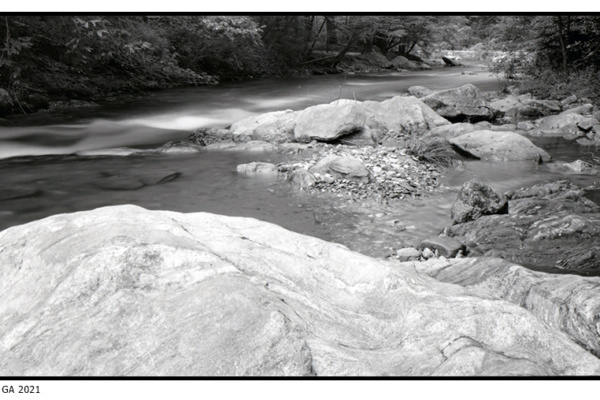
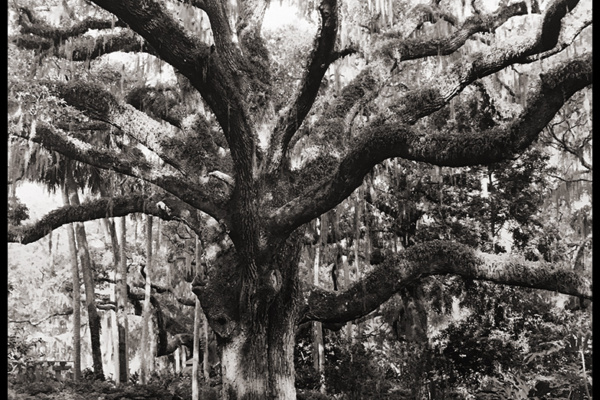
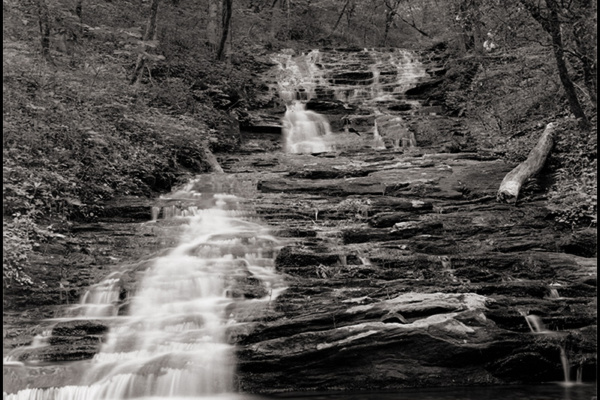
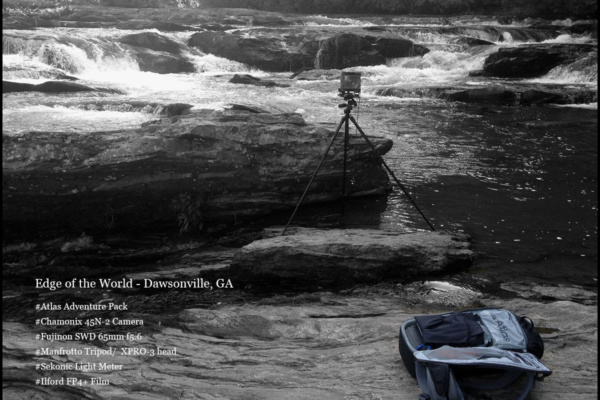
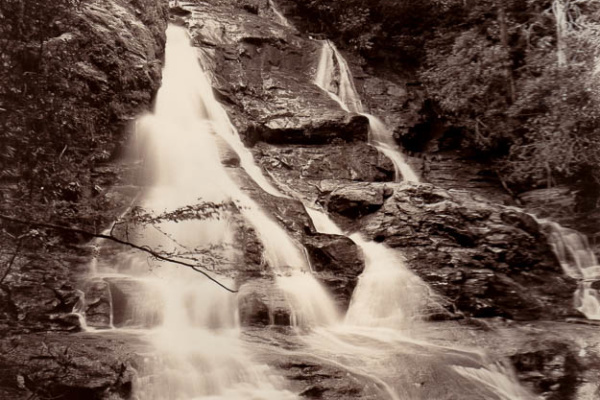
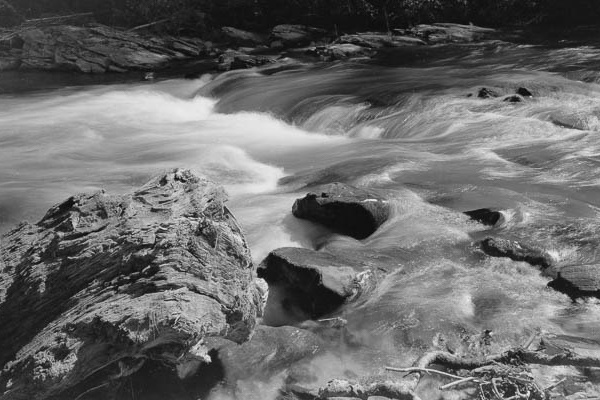
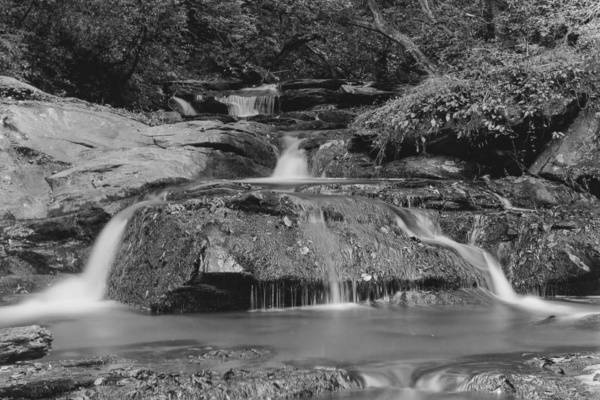
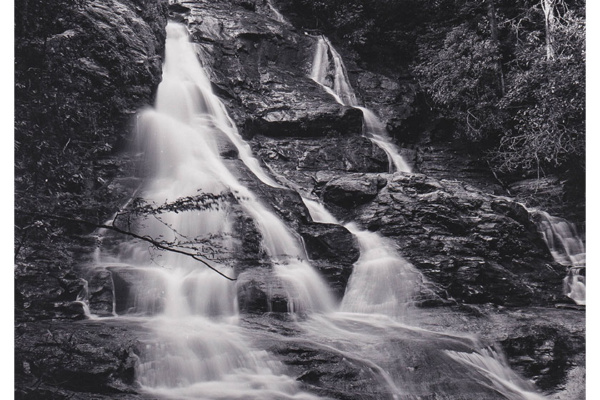
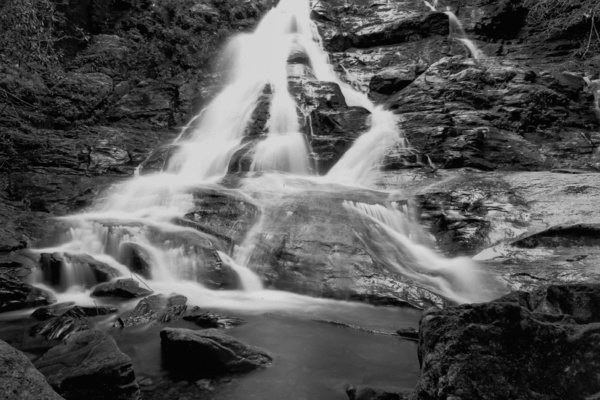
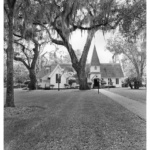 Spring Break 19 St. Simons Island and Jekyll Island
Spring Break 19 St. Simons Island and Jekyll Island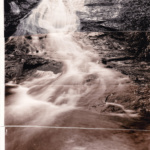 Nelson’s Gold Toner – First Impressions
Nelson’s Gold Toner – First Impressions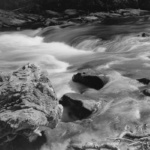 Amicalola and the Stump
Amicalola and the Stump